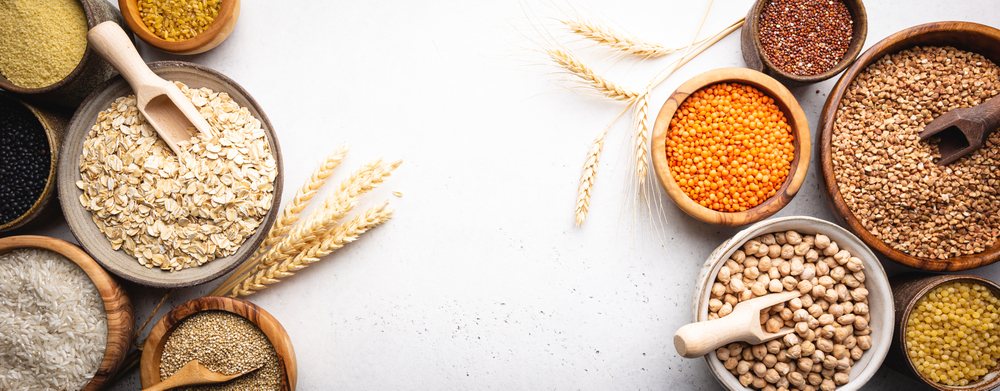Are we all suddenly getting allergic to gluten, meaning do we all have celiac disease? The answer to the question is NO. We are not allergic the way people with celiac disease are. Most of us are not able to digest modern wheat. Let’s understand what is going on with wheat and our digestion.
Modern Wheat is Different
Over the last 40–50 years, wheat has been heavily cross-bred to increase yield. This has changed its very structure:
- Modern wheat contains more gluten and more lectins.
- The amino acid sequences in gliadin and glutenin (the main gluten proteins) have changed significantly.
- High levels of gliadin act as a potent appetite stimulant, driving us to overeat.
- Wheat germ agglutinin (WGA), another component, irritates the gut lining and is thought to act as an immunotoxin, neurotoxin, cardiotoxin, and even a disruptor of gene expression.
In short, today’s wheat is not the same wheat humans were eating for thousands of years.
2) Digestive Strength Gets Compromised
Our digestive system (what Ayurveda calls Agni) struggles to process this modified wheat.
- Undigested food sits in the gut, leading to Ama (toxic buildup).
- Ama further weakens Agni, creating a cycle of poor digestion and gut inflammation.
- Processed Food Makes It Worse- White flour and refined wheat products have the highest gluten concentration. Bread, pasta, cakes, cookies, and packaged snacks overload the gut with gluten that’s even harder to digest.
- Imbalanced Diet- Modern diets rely too heavily on wheat products.
In Ayurveda, food should include all six tastes (Shad-Rasa): sweet, sour, salty, bitter, pungent, and astringent.
- A diet dominated only by wheat-based carbohydrates disturbs this natural balance.
Humans Ate Wheat for many Years Without Major Problems
Historically, wheat was well tolerated. But in just the last 40–50 years, reported cases of gluten sensitivity and self-proclaimed celiac disease have risen by nearly 400%. This dramatic shift aligns with both changes in wheat itself and the way we consume it.
So, What Exactly is Gluten?
Gluten is a protein complex made of gliadin, glutenin, and starch. It’s not just in wheat—it’s also found in:
- Semolina
- Durum wheat
- Einkorn wheat
- Spelt
- Bulgur
- Barley
- Rye
- Kamut
- Triticale
Gluten is what gives dough elasticity, makes pasta chewy, and gives bread its crispy crust—especially in refined flour products.
Celiac Disease vs. Gluten Sensitivity
- Celiac disease: An autoimmune condition where the immune system attacks gliadin, causing inflammation and flattening of the intestinal villi. This reduces nutrient absorption and leads to malnourishment, weight loss, and fatigue.
- Most people, however, do not have celiac disease. Instead, they experience digestive discomfort—bloating, constipation, or diarrhea, brain fog, or indigestion.—because their Agni (digestive fire) is weak and unable to handle modern wheat.
The difference?
- In celiac, the immune system is misfiring.
- In non-celiac gluten sensitivity, the digestive fire (Agni) is simply too weak to process modern wheat.
So, how do we tackle this problem?
Ideally, wheat itself would need to be changed—but that isn’t happening anytime soon. What we can control is the second factor: our digestion. This is where Ayurveda offers powerful solutions.
- Create balanced meals with the six tastes (Shad-Rasa).
When meals include sweet, sour, salty, bitter, pungent, and astringent tastes in balance, digestion is supported, cravings reduce, and Agni (digestive fire) stays strong. [Will talk in detail in my next blog]
- Use spices wisely.
Spices are not just for flavor—they are digestive aids. Whether used in cooking or as teas, spices strengthen Agni and prevent food from becoming Ama (undigested residue). They should be chosen mindfully based on the food being prepared and the individual’s predominant dosha—whether balanced or imbalanced.
- Avoid mixing multiple grains.
Ayurveda recommends using one grain at a time. However, blending wheat with black chana (Bengal gram or brown chickpea) flour is an exception. Black chana is protein-rich, reduces the relative gluten load, and helps improve insulin sensitivity.
- Choose old grain.
Grain stored for more than a year is considered less inflammatory and easier to digest. This is a traditional, time-tested practice followed by our ancestors.
- Opt for better alternatives.
Instead of cauliflower “flour” or other ultra-processed substitutes (which are vegetables, not true grains, and lack the nutritional value of cereals), choose traditional alternatives like barley, quinoa, millet, or rice.
- Barley, for example, has far less gluten—but those with a Vata imbalance should be cautious, as too much barley can aggravate Vata-related issues.
If you enjoy foods made with wheat, the key isn’t to completely give them up — but to make smarter choices and strengthen your digestion. With a balanced Agni (digestive fire), wheat and other grains can often be enjoyed without causing chronic problems. For most people, bloating or indigestion after wheat is less about the grain itself, and more about weakened digestion. The real solution lies in kindling Agni.
Simmi Chopra is a highly accomplished Ayurvedic Practitioner with a unique blend of expertise in traditional Ayurveda and modern science. Trained in the ancient healing system, she completed the prestigious Ayurveda Doctor program from Kerala Ayurveda. Based in New York City, Simmi practices at SIDH Ayur, where she offers personalized Ayurvedic therapies, dietary guidance, lifestyle recommendations, and herbal solutions to help clients achieve Holistic treatment for anxiety nyc.
According to a recent Seema article, The Gluten Confusion: It’s Not All Celiac, gluten sensitivity affects many beyond celiac patients.
